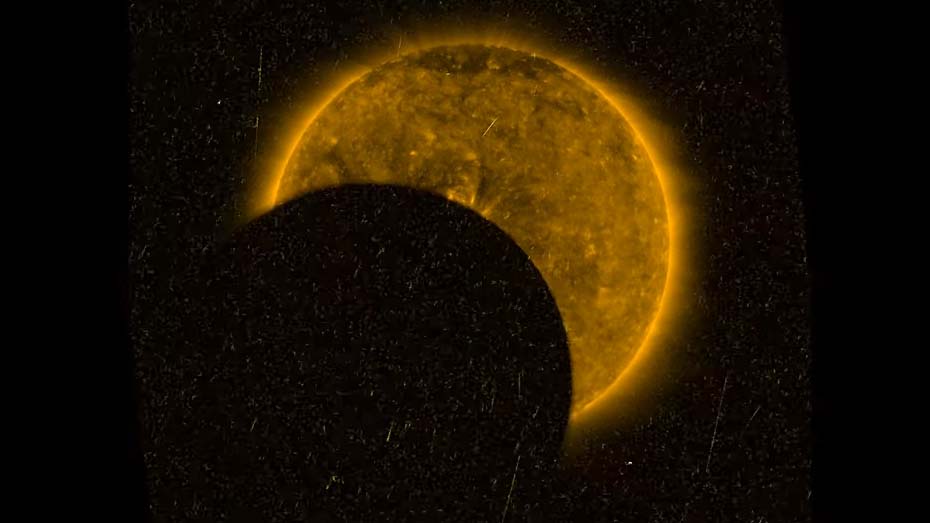A Satellite Watched the July 2 Solar Eclipse from Space (Video)
While Earthlings saw a total solar eclipse on July 2, the Proba-2 satellite witnessed four partial eclipses from space.
As millions of skywatchers witnessed the Great South American Solar Eclipse on July 2, a European satellite observed the celestial event from space.
While eclipse-watchers in parts of Chile and Argentine had the chance to see the moon completely block out the sun for a total solar eclipse, the European Space Agency's Proba-2 satellite was only able to see a partial solar eclipse — in which the moon covers just a portion of the sun — from its vantage point in space. However, the satellite saw the moon eclipse the sun four separate times in the amount of time that people on Earth saw just a single eclipse.
Proba-2 is a technology-demonstration satellite circles planet Earth at an altitude of about 435 to 500 miles (700 to 800 kilometers) in a sun-synchronous orbit, which means that it travels along the line between day and night with a nearly continuous view of the sun. The satellite was able to see the eclipse on four separate occasions because it orbits the Earth about 14.5 times per day.
Related: Best Photos of the 2019 Total Solar Eclipse

Back on Earth, the partial phase of the eclipse began when the moon's shadow first touched our planet at 12:55 p.m. EDT (1655 GMT). After crossing over the Pacific Ocean and South America, the shadow slid off our planet at 5:50 p.m. EDT (2150 GMT). Over the course of those 4 hours and 55 minutes that the eclipse was visible from Earth, Proba-2 dipped in and out of the moon's shadow four times.
Proba-2 launched in 2009 on a mission to study the sun and space weather events using a suite of instruments. It captured these images of the solar eclipse using an instrument called SWAP (short for "Sun Watcher using Active Pixel System Detector and Image Processing").
This was not the first time that the satellite has watched a solar eclipse; it also recorded videos of the Great American Solar Eclipse of Aug. 21, 2017, along with numerous other eclipses that have occurred during its time in orbit.
Get the Space.com Newsletter
Breaking space news, the latest updates on rocket launches, skywatching events and more!
- Satellite Sees Double When Snapping Solar Eclipse Pictures from Space
- 365 Days of Sunshine: Time-Lapse Video Shows the Sun on Every Day of 2018
- Solar Eclipse Photos: The View From Space
Email Hanneke Weitering at hweitering@space.com or follow her @hannekescience. Follow us on Twitter @Spacedotcom and on Facebook.
Join our Space Forums to keep talking space on the latest missions, night sky and more! And if you have a news tip, correction or comment, let us know at: community@space.com.

Hanneke Weitering is a multimedia journalist in the Pacific Northwest reporting on the future of aviation at FutureFlight.aero and Aviation International News and was previously the Editor for Spaceflight and Astronomy news here at Space.com. As an editor with over 10 years of experience in science journalism she has previously written for Scholastic Classroom Magazines, MedPage Today and The Joint Institute for Computational Sciences at Oak Ridge National Laboratory. After studying physics at the University of Tennessee in her hometown of Knoxville, she earned her graduate degree in Science, Health and Environmental Reporting (SHERP) from New York University. Hanneke joined the Space.com team in 2016 as a staff writer and producer, covering topics including spaceflight and astronomy. She currently lives in Seattle, home of the Space Needle, with her cat and two snakes. In her spare time, Hanneke enjoys exploring the Rocky Mountains, basking in nature and looking for dark skies to gaze at the cosmos.









